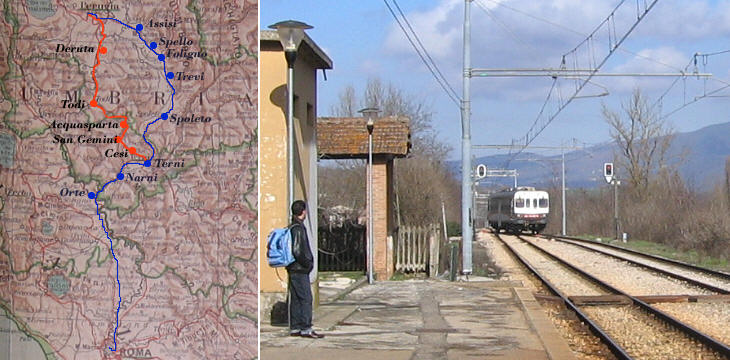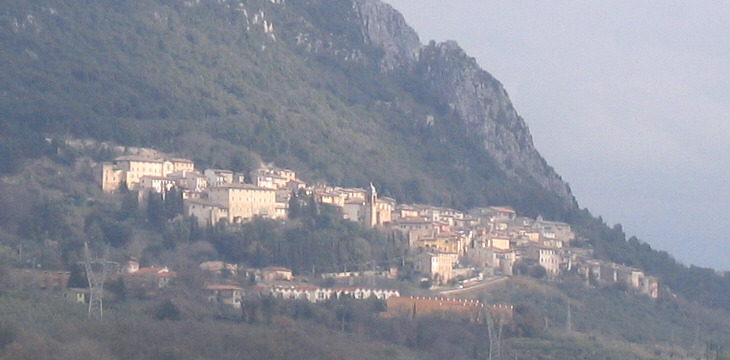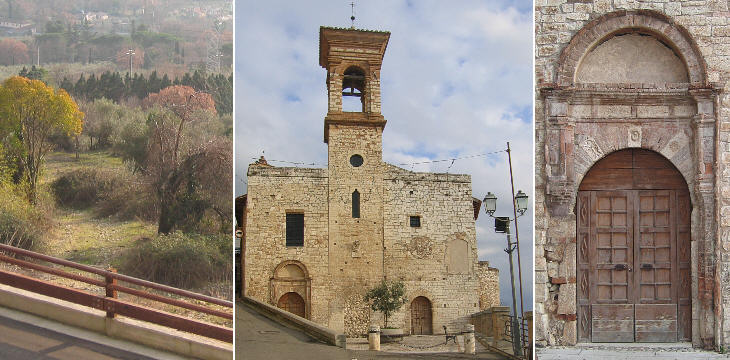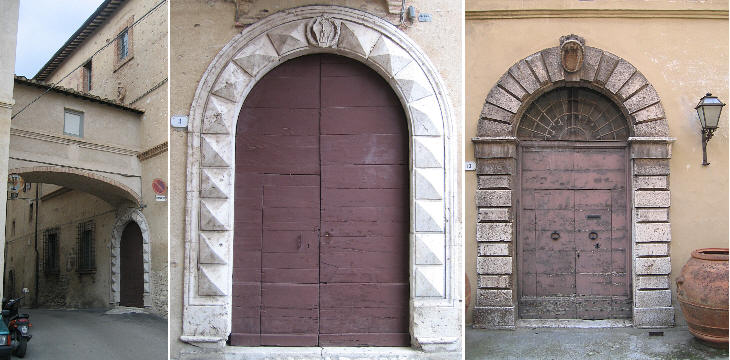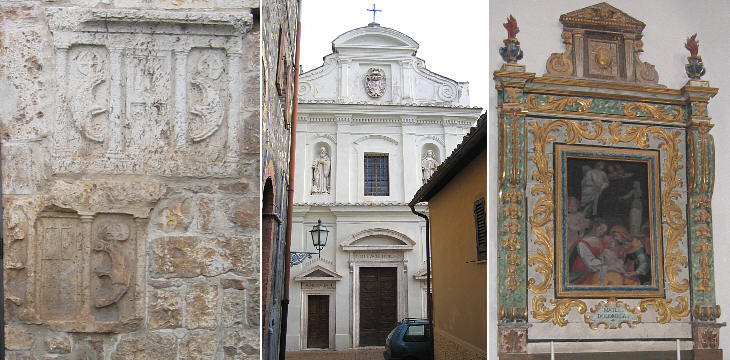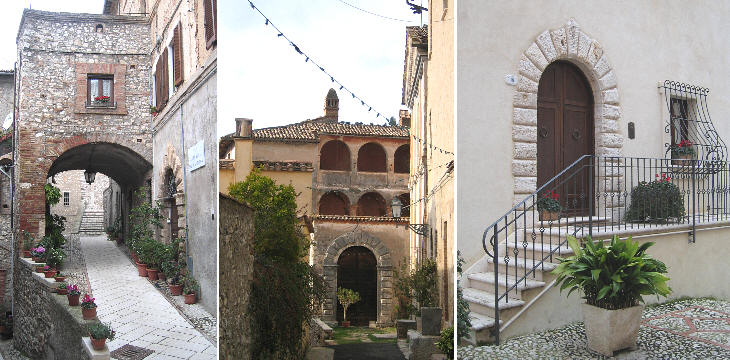  What's New! Detailed Sitemap All images © by Roberto Piperno, owner of the domain. Write to romapip@quipo.it. Text edited by Rosamie Moore. Page added in February 2008. |
Everyday a train leaves Termini: first stop: Orte; second stop: Narni; third stop Terni; fourth stop ... 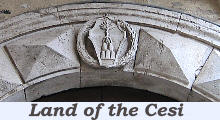 part one: Cesi part one: Cesi(Palazzo Cesi at Cesi: detail of the portal) Introduction
Japan and France are known for their high-speed trains which link their major cities; most European countries (including Italy) have developed a net of fast trains too. The services provided by Ferrovia Centrale Umbra can hardly be regarded as falling into this category of rail transport. Yet the two-coach train linking Terni with Perugia via Todi, has the charm of the good ol' days, when travellers watched the countryside they were crossing, rather than toying with cellular phones and the likes. Furthermore the Umbrian landscape is well worth being paid attention to!
While National Railway trains leave Terni (towards Perugia) in a north-eastern direction, those of Ferrovia Centrale Umbra go north-west and they soon reach a territory which belonged to the Cesi. This family is mainly known for Federico II Cesi (1585-1630), Duke of Acquasparta, the founder of Accademia dei Lincei, who protected Galileo Galilei and who preached that scientists (and more in general all men) should be allowed to develop their researches in naturalibus (in natural phenomena), without limits and constraints. At Academy meetings, Federico Cesi was called Coelivagus (fond of the sky) because of his interest in astronomy. Cesi
Cesi lies on the slope of a hill having a commanding view over the River Nera valley from Terni to Narni. Outside the small town there are very old polygonal walls and terraces of Roman villas. Cesi most likely means cut (trees) an indication that part of a wood was cut to make room for the first buildings; the coat of arms of the Cesi family shows a mountain having on top a tree, a reference to the town location and its being surrounded by woods (you can see it in the image used as background for this page).
Today two winding roads link the small railway station in the valley with the town: in the past there were paths which cut through the woods (or the olive-groves). S. Angelo is a medieval church which in the XVIth century was enlarged and it incorporated an existing tower; both the belfry and the portal belong to that period.
The Cesi family palace is a rather small building; its two identical portals facing each other have a simple, but very elegant design. Also other buildings have fine Renaissance portals.
Cesi retains memories of its long past: from the fragments of early Christian sarcophagi which decorate the walls of S. Andrea to Baroque churches and altars.
Move to page two: San Gemini and Acquasparta. 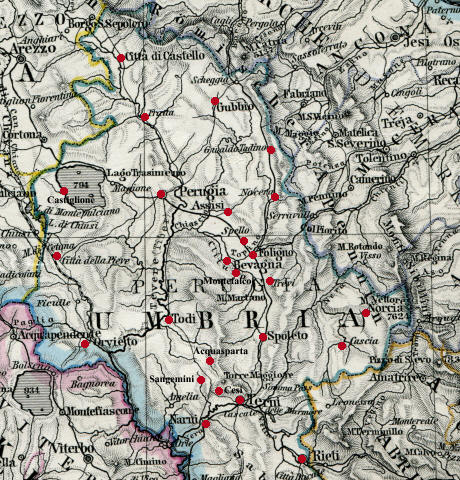
1864 clickable map of Umbria |
